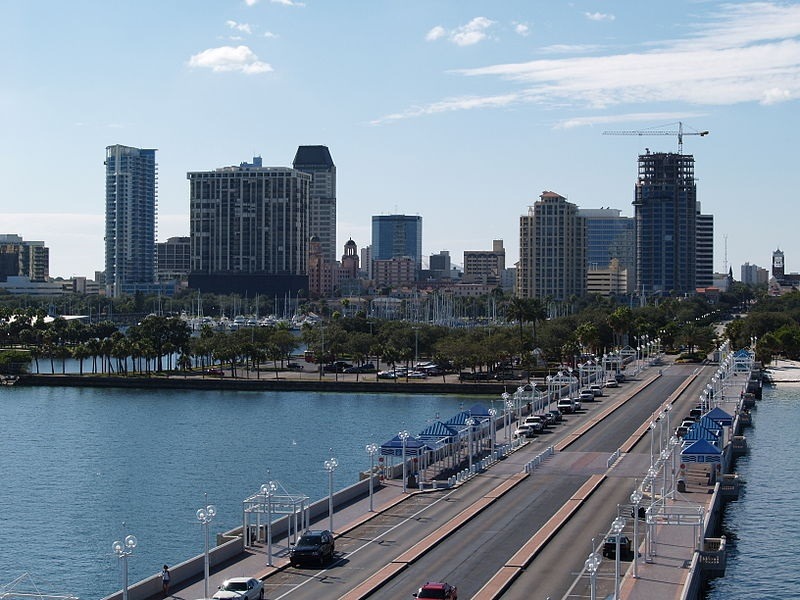
August 14, 2015; Tampa Bay Times
After a yearlong investigation, the Tampa Bay Times concluded that it took the Pinellas County School Board in Florida only eight years to turn five schools in the county’s black neighborhoods into “some of the worst in Florida”:
First they abandoned integration, leaving the schools overwhelmingly poor and black. Then they broke promises of more money and resources. Then—as black children started failing at outrageous rates, as overstressed teachers walked off the job, as middle class families fled en masse—the board stood by and did nothing.
After years of delay, the Pinellas County Schools were finally desegregated in 1971. This seemed to work from an educational perspective, with black students’ test scores steadily improving. However, over the coming decades, many of the districts’ parents were chafing at the compromises needed for integration: inconvenient busing of students and costly magnet programs. The district’s leadership responded to this pushback in 2007 and put in place a new “neighborhood schools” system. “Children in white neighborhoods would go to mostly white schools. Children in black neighborhoods would go to schools that were almost entirely black.”
Five schools that had been performing well were asked to teach the area’s poorest, most challenged children, including some with serious behavior problems. Before the changes, these students were “spread among a large area, mixed in with more affluent classmates and given access to several schools’ worth of teachers and counselors.” Now they were all concentrated in a handful of schools.
That this situation would have real difficulties was not a surprise. This was an approach that experts knew was doomed to fail. Gary Orfield, co-director of the Civil Rights Project at UCLA and a leading expert on school segregation, told the Times, “Fifty years of research has shown that such decisions set districts back. It produces schools that teachers don’t want to teach in and that are branded as failures by our state and national governments.”
Clayton Wilcox, then-superintendent, doubted even then that schools with so many impoverished students could succeed. According to the Tampa Bay Times, the district’s board knew “what had to be done to keep south St. Petersburg schools on equal footing. The schools would need more money, staff and after-school programs…and it may mean taking some resources from some other schools.”
But these commitments were not kept, and the result has been the five schools serving almost exclusively African-American students are among the worst in the state of Florida:
Sign up for our free newsletters
Subscribe to NPQ's newsletters to have our top stories delivered directly to your inbox.
By signing up, you agree to our privacy policy and terms of use, and to receive messages from NPQ and our partners.
In 2014, they were a third more likely to fail math than black children in Miami-Dade, Broward, Orange and Palm Beach counties. […] There were 1,664 regular elementary schools tested in Florida in 2014. Students at 1,650 of those schools passed reading at higher rates than children in Pinellas County’s five most segregated schools.
The five schools also proved to be difficult places for teachers to teach. So inhospitable for staff were they that in 2014, 52 percent of the schools’ instructors requested transfers out.
Despite ongoing feedback from parents, community leaders and teachers that their district was failing their black students no meaningful changes were made. After eight years, the district’s leadership still is searching for how to fix the problem it has created. In an interview with WTSP-TV, Pinellas County Schools’ Superintendent Mike Grego says he is well aware of the problems at these failing elementary schools; he says it’s something the school board is learning from and has made its their number one priority to fix.
The negative impact on black students, their families, and their community tragically mirrors what has taken place in too many other cities. For example, in 2005, as the flood waters receded, the Louisiana State legislature raised the passing grade for its schools, giving it a reason to transfer most of the New Orleans school system to a newly formed Recovery School District. With control shifted from a local school board, a system of struggling neighborhood schools was replaced by a system reliant on charter schools and school choice.
So how have these changes worked for the predominantly black children of New Orleans? Not so well. The New Orleans Tribune summarized the NO Recovery School District’s accomplishments in a recent editorial:
More than 54 percent of the charter schools under RSD control are either failing or in transition. Another 35 percent are mediocre. If they were measured by the same standards used to take over the schools in Orleans Parish in 2005, the RSD would be forced to relinquish all but four campuses under its control. Again, just to be clear and for the record: if the RSD were judged by the same standards used to take control of schools in New Orleans 10 years ago, the RSD would be left with only four schools.
Newark, New Jersey provides still another example of black children as the “collateral damage” to a failed schools change effort. A recent Washington Post report indicated that despite years of state control of Newark’s schools and reliance on charter schools, K–8 test scores show no significant improvement. The percentage of students proficient in reading and math on state tests dropped in 2014 compared to 2011, and at schools that replaced administrators and staff, student scores lag behind other New Jersey schools with similar demographics.
What is common to all of these change efforts is that those making the changes are not representative of those who are directly affected or those who will have to live with the consequences of failure. And it seems that what else is common is that failure does not seem to lead to rethinking the strategy. Maybe when you don’t have to live with the price of failure, it just doesn’t really make a difference.—Marty Levine













